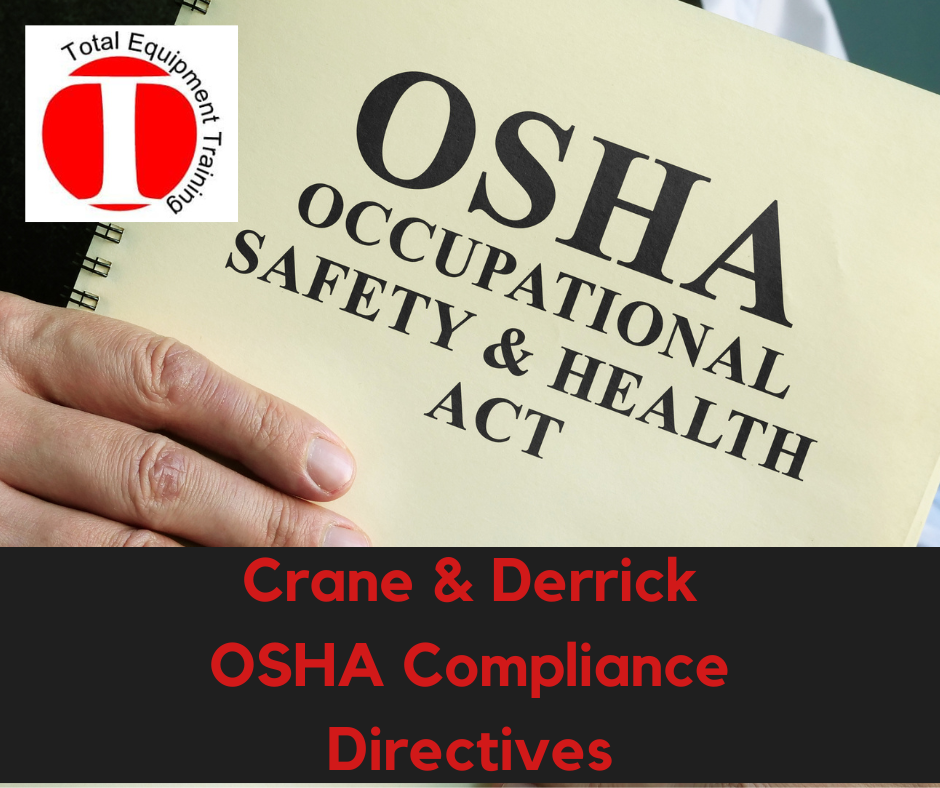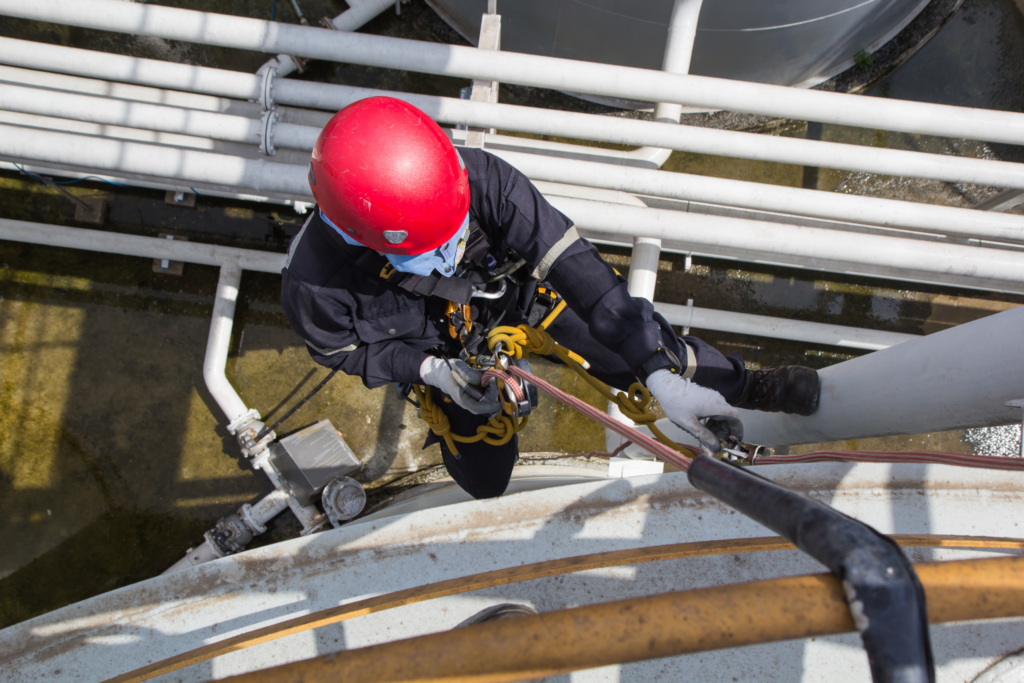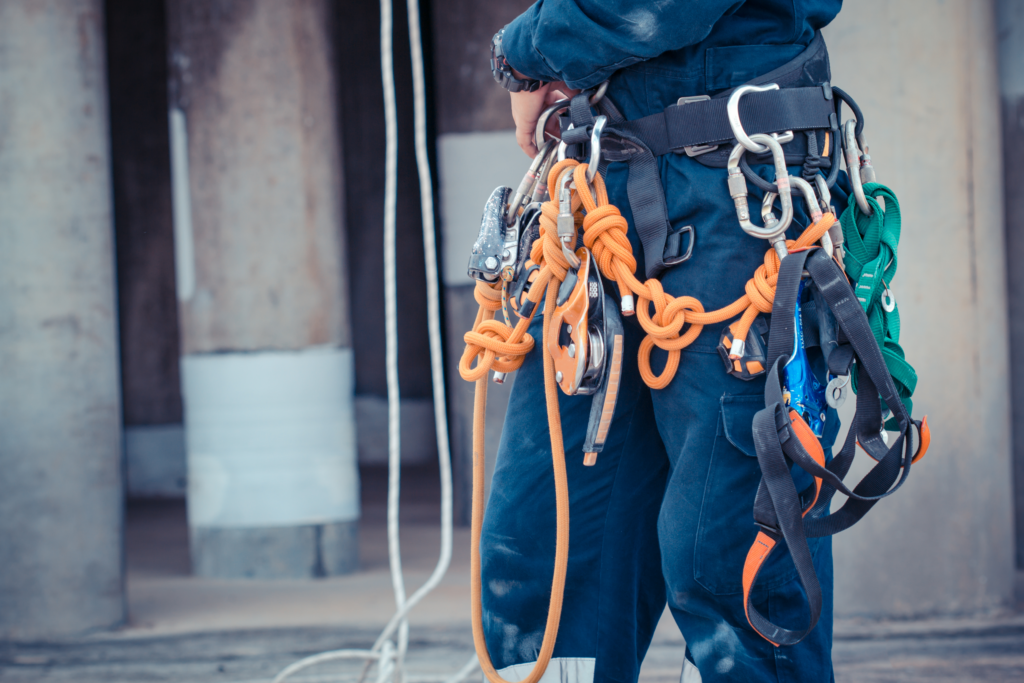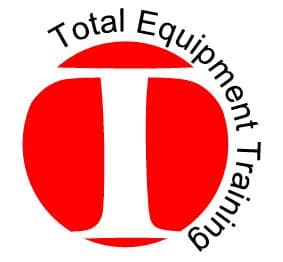
The Occupational Safety and Health Administration (OSHA) is the nationally accredited and internationally recognized organization authorized to create and amend regulations for the safe work conditions for workers. They provide training, education, and outreach to aid in the dissemination of information. OSHA compliance announcements are always being made in order to keep up with the advancements in equipment.
For the construction industry, of which cranes and derricks are a part, OSHA has created several regulations, guidelines, and protocols all coalesced into a compliance directive. In this article, we review some of the OSHA crane updates published on February 11, 2022.
What is the purpose of OSHA Guidelines?
OSHA guidelines are put in place to achieve several objectives, with a baseline goal of making the workplace safe. They include:
- Educating employees on the proper use of tools and machinery
- Identify and communicate unsafe conditions and potential hazards
- Emphasize important information, such as keeping emergency exits clear and accessible
- Instill a sense of awareness of the workplace surroundings, like machines in operation on site, also including staying alert to warning signals
- Safety equipment that should be worn when doing different types of work, from earplugs to Nomex body suits.
- Following safety guidelines when responding to emergencies or unexpected events, such as machine malfunction or compromised closed spaces.
Key Points of the Compliance Inspection
OSHA has several requirements when it comes to crane inspection at the work site. An abbreviated checklist for inspection contains:
- Determining the adequacy of ground conditions the crane will move over.
- Checking the crane’s components for any visible indications of repair.
- Gathering information on any live overhead lines in the vicinity of the workplace, with work zones being demarcated and any encroachment steps in place.
- Verification of the signal person’s documentation and qualification.
- Ensure that lift plans (if any) are being followed.
- Inspection of all rigging equipment to be used by workers
- Verify that load charts and manuals are correct, available, and understood by the crane’s operator
- Determine the number and frequency of workers entering and around the crane’s operation area.
Inspection Information and Citation Policies
This section of the compliance directive covers recommended subject matter for interviews of individuals working in the construction industry and with heavy equipment.
- Employee/Employer Interviews – this supplements any information shared in the Field Operations Manual from interviews with individuals at the site.
- Qualified Individuals – Workers tasked with certain duties must meet the definition of qualified or competent persons, (with interviews documenting these credentials) for them to safely use their assigned equipment.
- Tasks required of an Individual – these are provisions given that specify the scope of duties for an individual in a designated role, e.g., signal persons
To learn more about what exactly goes into a crane inspection, see Total Equipment Training’s OSHA-compliant annual inspection here.
Scope: Under § 1926.1400
These are OSHA regulations that apply to any power-operated equipment that can hoist, lower, and horizontally move suspended loads when used in the construction industry. The scope covers most types of cranes and derricks, unless OSHA has established regulations specific to the type of machine. Exclusions from this include power shovels, excavators, concrete pumps, automotive wreckers, and most loaders.
Ground Conditions Under § 1926.1402
‘Ground Conditions’ means the ability of the ground to support the crane. The crane should not be deployed for duty until ground conditions have been assessed (for possible slip, loose surface, obstructions) by a qualified person.
Assembly/Disassembly Under §§ 1926.1403-.1406
This section describes the safe and proper conditions to be aware of when taking apart the crane. They include supervision while disassembling, knowledge of procedures and crew safety procedures during disassembly/assembly.
Power Line Safety: Under § 1926.1407-.1411
This power line safety section refers to safety protocols when assembling, disassembling, or working at or near power lines. The focus is mainly on preventing electrocution, as well as getting closer to (encroaching) the electrocution hazard. Some essential measures include:
- De-energizing and grounding the lines
- Establishing a 20-foot (approx. 6 meters) distance from the power lines
Use non-conductive tag lines
Inspections Required Under § 1926.1412
OSHA’s required inspections by a qualified person as covered in the compliance directive include:
- Post-Assembly – Inspection carried out after the crane has been assembled, according to the manufacturer’s criteria.
Repaired or Adjusted Equipment – This is inspection done after any components of the crane have been altered or repaired. A load test may be required. - Each Shift – Inspection carried out before the crane is put into operation.
- Monthly – A required inspection carried out every month
- Annual/Comprehensive – The crane goes through a thorough inspection (being disassembled if necessary) every 12 months.
- Severe Service – This inspection is unique in that it is not done in regular frequency, but rather after when the crane has been operating in extreme conditions.
- Equipment not in regular use – Cranes that have been idle for more than 3 months are subjected to this inspection to assess their capacity to resume operation.
Contact Total Equipment Training for your OSHA compliance
Wire Rope Inspections Under § 1926.1413
This is the inspection of wire ropes (running and standing) that are likely to be in use, verifying proper working capacity. These inspections are also carried out by a qualified person. They include:
- Shift Inspection – Inspecting the wires before every shift
- Monthly Inspection – A mandatory inspection after every 30 days.
- Annual/Comprehensive – Carried out every 12 months

Wire Rope Selection and Installation Criteria: Under § 1926.1414
This section highlights the selection and installation of wire rope equipment. It gives breakdowns on the types of wire ropes to be used, their proper use, wire rope requirements for certain operations, and criteria for compliance by qualified persons.
Safety Devices: Under § 1926.1415
This covers all safety devices in cranes. These devices include a Crane Level Indicator’ (which tells the driver the degree of incline of the ground that the crane is on) and a horn. Proper operation is required for all the devices mentioned in this section.
Operational Aids Under § 1926.1416
The section outlines the proper use of operational aids according to their categories. Also contained are the requirements for the devices themselves to be used during crane operations, such as their application in utilities manufactured after a certain year. Some of these devices include:
Category 1
- Boom Hoist Limiting Device
- Luffing Jib Limiting Device
- Anti-two-Blocking Device
Category 2
- Boom Angle/Radius Indicator
- Jib Angle Indicator (if equipment has luffing jib)
- Boom Length Indicator (if equipment has a telescopic boom)
- Load-Weighing Devices
Operation: Under § 1926.1417
OSHA requires that the employer complies with all manufacturer procedures given for the equipment, including its use with compatible attachments. This section focuses on compliance with operational procedures, such as their creation (and by whom), proper utility (designation of roles), absence of operator policies, and limitations to carrying out operations.
Authority to Stop: Under § 1926.1418
The authority to stop operation is given to the operator after realizing a potential hazard. They may choose to use this authority until a qualified person has determined that safety has been assured.
Signals and General Requirements Under §1926.1419
This section of the compliance directive outlines situations for which signals are required, the types of signals to be used, and where a signal person is required for efficient communication.
Radio, Telephone, or other Electronic Transmission of Signals: Under § 1926.1420
These are safety regulations concerning the use of radio as a communication medium between the crane operator and the signal person, or any other relevant party. This includes the setup of the communication network (device inspection) and its utility (multiple users, e.g., 3 operators, one signal person for coordinated projects). Learn more about OSHA electronic signal transmissions.
Voice Signals – Additional Requirements: Under §1926.1421
This section provides guidelines on the setting up of voice signals between the operator and the signal person. It is aimed at providing a clear basis for the type of signals to be used and the structure for the signals themselves (having the key elements of function, direction, distance, speed, another function, and the stop command). Learn more about the OSHA voice signals between operators and signal persons.
Signals – Hand Signal Chart: Under §1926.1422
OSHA has created several universally applicable hand signals for use at the work site. These signals should constantly be within the operator’s field of vision (without causing obstruction to sight) for their reference.
Total Equipment Training, a nationally recognized, OSHA-compliant authority provides training and certification for signal persons and a diverse menu of subjects that will help improve safety and maximize efficiency at the work site.
Fall Protection Under §1926.1423
Fall protection is the mitigation of risk from falls by workers performing duties at elevation. This section of the compliance directive guides on safety measures to have in place (guardrails, harnesses) for different conditions when working with cranes. Total Equipment Training’s documentation on fall protection provides a breakdown on what to look out for, and how to improve safety around work involving fall hazards.

Work Area Control: Under § 1926.1424
The section discusses crane operation hazards (such as a swinging load striking a worker), and the safety measures in place to protect workers in and around the area of operation (training workers to identify pinch/crush hazards).
Keeping Clear of the Load: Under § 1926.1425
These are specific regulations governing the conditions for the safety of a load’s hoisting route and fall zone. It outlines the workers permitted in fall zones (riggers) and the safety requirements they must meet when working within a load’s fall zone.
Boom Free Fall and Controlled Load Lowering Under § 1926.1426
This section touches on OSHA conditions for safe load lifting. It covers prohibitions on boom-free falls, how to prevent boom free falls, and covering components that could cause a free fall of the load.
Total Equipment Training: OSHA Compliance Updates
OSHA Compliance Directives (CPLs) for Cranes and Derricks is a very comprehensive document, delving into detail the full battery of procedures, protocols, and measures to follow in order to safely use cranes and derricks on site. Breaking down this information for absorption and retention may be a challenge for an individual or group!
That is why Total Equipment Training provides experienced trainers who can clearly break down this information to be site-specific and fit the specific needs of your company and employees. Contact TET to gain a better understanding of crane and derrick operation and realize improvements in both site safety, and work efficiency.

